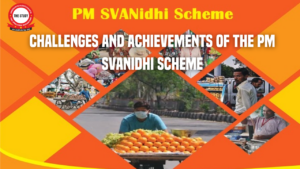Font size:
Print
Malnutrition and Child Deaths in India
Context:
- In 2021, over 70% of child deaths in India were linked to malnutrition, emphasising the urgent need to improve maternal and child nutrition for better health outcomes.
- A total of 0.7 million children under the age of five died in India, with 0.5 million (over 70%) of these deaths attributed to child and maternal malnutrition.
Global Context:
- Globally, 4.7 million children under five died in 2021, with 2.4 million (about 50%) linked to malnutrition, highlighting a significant difference in India’s statistics.
- Child deaths often arise not directly from malnutrition but from conditions exacerbated by it, indicating malnutrition is a critical risk factor for premature death.
Major Contributors to Malnutrition-Linked Deaths:
- Low Birth Weight: The leading cause of child deaths linked to malnutrition in India, often resulting from maternal malnutrition or infectious diseases during pregnancy.
- Underweight and Vulnerability: Children who are underweight are more susceptible to infections and diseases, leading to high mortality rates.
- Wasting and Stunting:
-
- Wasting refers to a child being too low in weight for their height.
- Stunting signifies a child being too short for their age.
-
Comparison of Malnutrition Death Rates:
- Death rates from malnutrition are significantly higher in low-income countries, where children lack a diverse range of nutrients and face a higher prevalence of infectious diseases.
- The disparity in malnutrition deaths is evident, with rates in rich countries being 20 to 50 times lower than in the poorest countries.
Decline in Malnutrition-Linked Child Deaths:
- Since 1990, global deaths related to malnutrition have decreased by 63%, falling from approximately 6.6 million to around 2.4 million by 2021.
- In India, there has been a remarkable 80% decline in malnutrition-linked child deaths, from 2.4 million in 1990 to 0.5 million in 2021.
Factors Contributing to Improvement:
- Sanitation and Disease Control: Significant reductions in deaths from diarrheal diseases due to improved sanitation, clean water access, and better health treatments have contributed to this decline.
- Healthcare Access: Increased availability of skilled healthcare workers during childbirth has improved outcomes for infants, particularly those with low birth weights.
- Vaccination Programs: Enhanced vaccination efforts against diseases like tuberculosis and rotavirus have helped lower mortality rates among children.
Government Initiatives Against Malnutrition:
- Mission Poshan 2.0: Aims to strengthen nutrition programs and combat malnutrition.
- Integrated Child Development Services (ICDS): Provides essential services including food, preschool education, and healthcare.
- Pradhan Mantri Matru Vandana Yojana (PMMVY): Offers financial assistance to pregnant and lactating women.
- Mid-Day Meal Scheme: Ensures school children receive nutritious meals.
- Scheme for Adolescent Girls (SAG): Focuses on nutrition support for adolescent girls.
- Mother’s Absolute Affection (MAA): Promotes breastfeeding practices.
- Poshan Vatikas: Establishes nutrition gardens for locally grown food.



